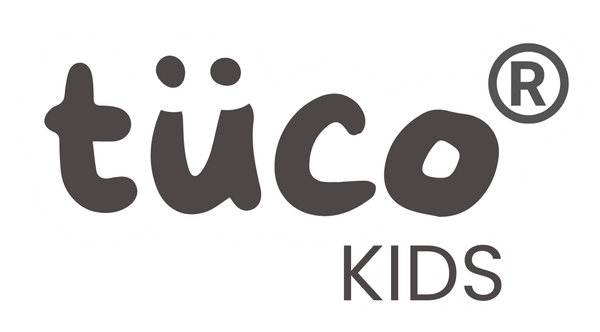
How to Avoid Dryness from Soaps in Kids?
Children’s skin is naturally more delicate than adults’. Parents often notice that after baths, their child’s skin sometimes feels tight, itchy, or flaky. While this is common, frequent dryness can be uncomfortable and, if untreated, lead to skin irritation or conditions like eczema. The good news is that most dryness issues are preventable with the right skincare practices and soap choices.
In this blog, we’ll explore what causes dry skin in children, how parents can recognize the signs, why some soaps make dryness worse, and how to care for kids’ skin properly, including the role of gentle soaps, moisturizing, and safe product choices.
What Causes Dry Skin in Kids?
Several factors contribute to dry skin in children:
-
Thinner Skin Barrier: Kids’ skin is not as developed as adult skin. It loses water more quickly and has less natural oil production, making it prone to dryness.
-
Environmental Conditions: Cold weather, dry indoor heating, or too much exposure to the sun can sap moisture from the skin.
-
Frequent Washing: Children often wash their hands, faces, or bodies multiple times a day. Over-washing, especially with hot water or harsh soaps, strips away natural oils.
-
Chlorine and Hard Water: Swimming pools or tap water with high mineral content can irritate and dehydrate the skin.
- Underlying Skin Conditions: Eczema or sensitive skin types are especially prone to dryness.
How to Check for Dry Skin in Kids
Parents can look for these signs to determine if their child has dry skin:
-
Flakiness or White Patches: Common on arms, legs, and cheeks.
-
Rough Texture: Skin may feel sandpapery instead of soft.
-
Redness or Irritation: Especially after bathing.
-
Itchiness: Children may scratch or complain of feeling “itchy” after a wash.
- Cracks in the Skin: Severe dryness can cause tiny cracks that are painful and make skin more vulnerable to infection.
Why Some Soaps Cause Dry Skin
Not all soaps are created equal. Many soaps designed for adults contain strong cleansing agents meant to remove oil, sweat, and dirt from thicker, more resilient adult skin. For children, these soaps can be too harsh.
Here’s why:
-
Harsh Surfactants: Ingredients like sodium lauryl sulfate (SLS) strip away natural oils too aggressively.
-
High pH Levels: Many adult soaps are alkaline, disrupting the natural pH (about 5.5) of children’s skin.
-
Artificial Fragrances and Dyes: These add-ons can irritate delicate skin and worsen dryness.
- Overuse of Antibacterial Agents: These remove not just bacteria but also protective oils, leaving skin exposed and dry.
Why Adult Soaps Should Not Be Used on Kids
Many parents, out of convenience, let children occasionally use adult soaps. Dermatologists caution against this practice.
-
Adult soaps are designed to cut through stronger body oils, making them too drying for kids.
-
Irregular use may still cause irritation, as children’s skin cannot adapt to harsh cleansing.
-
Using the wrong soap repeatedly may lead to chronic dryness, itchiness, and even eczema flare-ups.
The solution is simple: stick to age-appropriate soaps formulated for children.
The Role of Kids’ Age-Appropriate Soaps
Choosing the right soap makes a big difference in preventing dryness. Parents should look for soaps that are:
-
pH Balanced (around 5.5): Matches skin’s natural acidity and protects the barrier.
-
Free of Sulfates and Parabens: Avoids over-stripping oils and harmful preservative exposure.
-
Moisturizing: Infused with ingredients like oats, shea butter, coconut oil, or aloe vera.
- Non-Toxic and Clinically Safe: Specifically designed for children’s delicate skin.
Tuco Kids offers bathing bars made especially for children’s skin needs.
Sensitive Skin Bathing Bar – Formulated with oats, rice water, licorice, and allantoin, this bar soothes sensitive skin, locks in hydration, and helps reduce irritation.
Dull Skin Bathing Bar – Contains turmeric, Kakadu plum, coconut oil, olive oil, and shea butter to refresh, brighten, and deeply moisturize dry skin.
Both options are sulfate-free, paraben-free, and non-toxic, ensuring safe daily use from toddlers through pre-teens.
The Importance of Moisturizing After Washing
Even with the best soap, cleansing removes some moisture from the skin. That’s why moisturizing is the most important step after bathing.
Why Kids Need Moisturizer After a Wash:
-
Replenishes Lost Hydration: Keeps skin soft and smooth after cleansing.
-
Strengthens the Skin Barrier: Creates a protective layer to lock in moisture.
-
Reduces Itching: Prevents discomfort caused by dryness.
-
Prevents Flare-Ups: Particularly helpful for children with eczema or sensitive skin.
- Builds Healthy Habits: Teaching kids to moisturize sets them up for better skincare routines later in life.
Along with soaps, moisturizing helps lock in hydration and repair the skin barrier. Tuco Kids offers a few kid-friendly lotions that parents can choose depending on skin needs:
Tuco Kids Summer Body Lotion — with aloe vera & almond oil, lightweight and non-greasy, suitable for kids from about ages 2-15.
Tuco Kids Dull Skin Lotion — enriched with turmeric and Kakadu plum, designed to brighten and nourish skin, while remaining gentle.
These moisturizers are formulated to be non-toxic and safe for children, making them ideal for completing the bath-to-moisture routine without worry.
Conclusion
Dryness in children’s skin is common but preventable. By understanding the causes, recognizing the signs, and making smarter choices in soaps and skincare routines, parents can keep their child’s skin soft, healthy, and irritation-free.
Avoiding adult soaps, sticking to child-appropriate gentle soaps and always following up with moisturizers can make bath time not just about cleaning but about long-term skin health.
Because when skin feels good, kids can focus on what they do best which is learning, playing, and enjoying their childhood.

